Pretend we’re back at the start of 2023, and I’m going to pitch you two story ideas. Your only job is to evaluate which one is better.
Story idea 1: Find two players who might get a captain’s pick for the Ryder Cup but are squarely on the bubble – in this case, Justin Thomas and Keegan Bradley. Follow them and document the journey to the point when Zach Johnson makes his calls.
Story idea 2: Tom Kim is a 20-year-old player with star potential but he has to prove himself in the golf’s biggest events. Follow him at all four of men’s majors in 2023 to see if he can validate himself in the eyes of the golf world.
On the surface, both of these may sound fine. But let’s look closer at idea No.2. Who is Tom Kim, actually? At the time, he was an emerging talent with some nice moments on his résumé, but was more or less an unknown quantity to most golf fans, and certainly not someone who had to accomplish anything with any sense of urgency. Also, did it actually matter how a 20-year-old played in the majors, short of winning one? Would it break him if he failed? Would it “validate” him if he succeeded?
To sell that angle, not only do you have to pray for good results that fit your story, but you really have to hammer the idea that these majors matter for his career arc. Which, sorry to say, they don’t. And if you pursue it, you’re going to find yourself trapped into a narrative that doesn’t actually make sense, and your conclusion is going to be facile whether he succeeds or fails, because the stakes are actually so low.
What about idea No.1? Here, we know that we have a definite ending, we have the drama of “will he or won’t he?” make the Ryder Cup team with the captain’s pick scenario, and you can trace the trajectory of that drama through each players’ results throughout the year, which will inevitably have their own compelling moments. It also doesn’t matter who gets accepted or rejected, because both outcomes are interesting in different ways. The more you analyse it, the more you realise that if you can tell it well, the story is bound to be great.
This dichotomy in narrative devices, in a nutshell, represents the good and bad of “Full Swing,” the Netflix golf documentary whose strong second season premieres this week. It’s a hugely entertaining show at its best, a frustrating one at its worst, and at the risk of sounding reductive, it mostly boils down to whether or not they’re trying to fit a square peg into a round hole with a pre-fabricated story. The good news is that they commit the sin far less often in Season 2 than they did in Season 1, and by my count, five of the eight episodes range from good to great.
The other heartening news is that even in the episodes that make you roll your eyes hard enough to risk injury, the sheer access can still lead to jaw-dropping moments. Case in point: In the second episode, amidst a fairly underwhelming tour of the year’s majors and some awkward stumbling around the topic of LIV, we get a glimpse of the champions dinner at the PGA Championship. There, in his capacity as last year’s winner, Justin Thomas gives a toast where he actually thanks Mito Pereira in front of everyone for blowing the 18th hole and allowing him to win. And no, Mito Pereira isn’t present. It’s hilarious, outrageous, and pretty much worth the price of admission.
Or, take that Tom Kim episode. The example I gave above wasn’t hypothetical – Netflix really spent the fourth episode trying to convince us that it’s very, very important that Tom Kim performs well in the majors. It’s a predictable mishap from a storytelling angle; you can tell they want to paint a picture of initial struggle followed by eventual redemption. To do so, they’re forced to pretend that his 16th-place finish at the Masters isn’t good (it was his best finish to date at a major). Then they completely ignore his T-8 finish at the US Open – as in, they literally don’t show or mention it once – because they want his backdoor T-2 at Hoylake to be the signature finishing piece, and a prior top-10 would kind of ruin that. Meanwhile, they show clips of Jack Nicklaus, Jordan Spieth, and Tiger Woods winning majors at young ages to advance the idea that Tom Kim kinda has to win now. It fails on that level, and it even struck me as a bit dishonest for a documentary.
But! It still has some terrific, laugh-out-loud moments – I won’t soon forget Kim riding around his apartment on a motorised cooler, or stumbling by accident into the Champions locker room at Augusta National and earning a cold stare down from the attendant – and despite the flimsy narrative, you come away liking Tom Kim quite a lot.
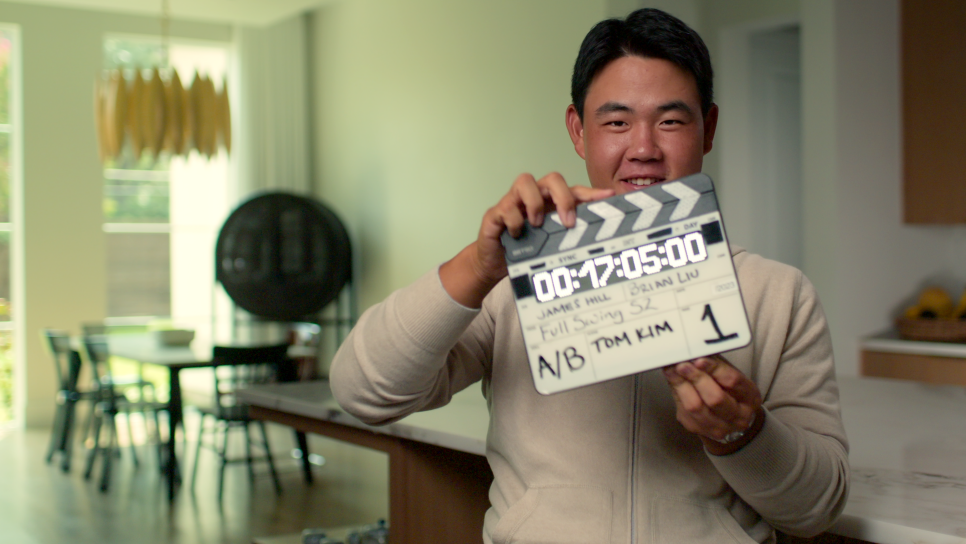
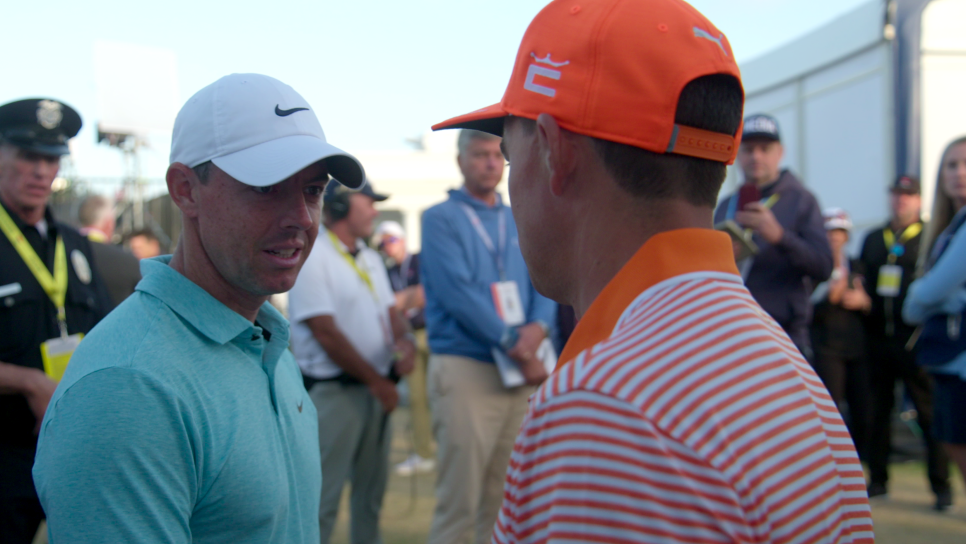
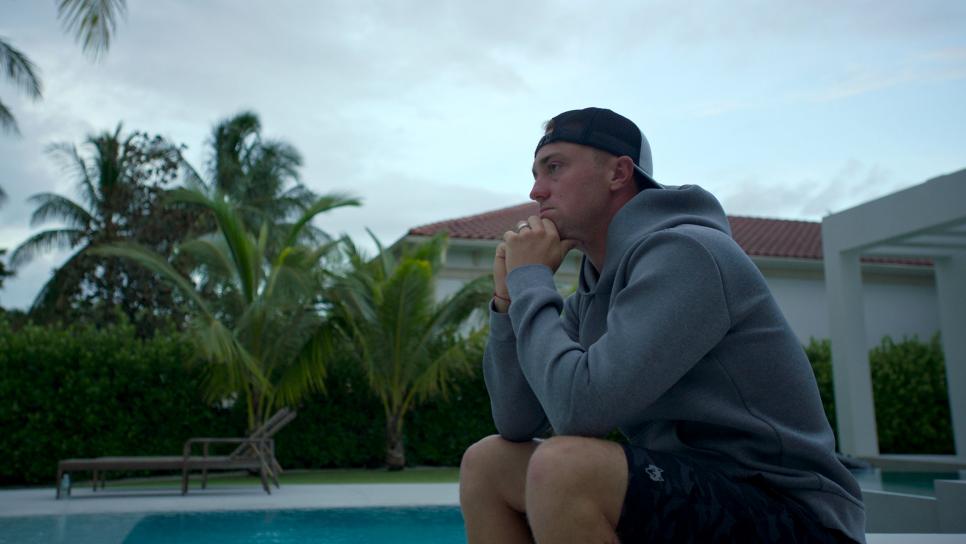
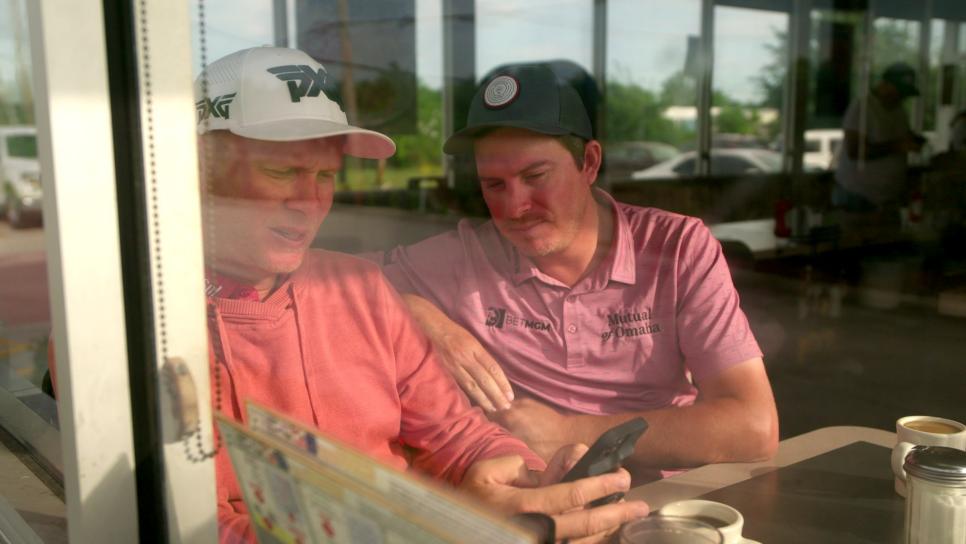

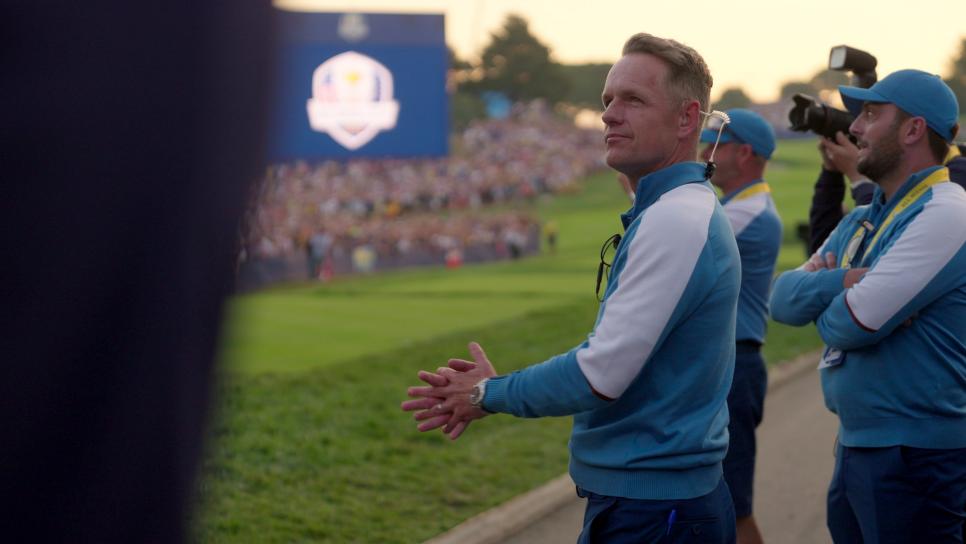
So far, this all seems pretty tough on Full Swing, but it turns out they were holding their best stuff in reserve. For the second straight season, the Joel Dahmen/Geno Bonnalie episode is a show-stealer. This time, they’re paired with Wyndham Clark, and the dual narratives of Dahmen’s struggles with his newfound fame and Clark’s rise after a difficult past, fit beautifully together. I found myself tearing up multiple times as I watched, and that was after coming in with a good deal of cynicism from the first two episodes.
Why did it work so well in the shadow of lesser material? Because, while there was a narrative in place, it came from a place of humanity – let’s see how these two different people deal with adversity in a difficult sport – and when they let the story flow, the prodigious filmmaking shines through. Just like last year, I finished the Dahmen episode thinking that I had just watched a completely different show.
Luckily, the second half of the season is a murderer’s row of prime storytelling. Following a surprisingly fun look at the Fitzpatrick brothers, we move on to my favourite episode of all – yes, even above Dahmen – with Thomas and Bradley vying to make the Ryder Cup. Here again, no manufacturing a narrative is necessary, but by staying within the story, they identify a terrific underlying theme – Thomas is popular, he’s charismatic, and he’s friends with Zach Johnson, while Bradley is an outsider in every sense of the word.
Rivalry, controversy, drama. Just another year in professional golf when the Full Swing cameras are rolling 👀 Season 2 premieres March 6! pic.twitter.com/YJ0UsRKvv1
— Netflix (@netflix) February 26, 2024
The portrayal of Thomas in particular is wonderful; he is almost Machiavellian, but not in a sinister way. He simply uses his social skills to become closer to Johnson (he’s even smart enough to joke, right in Johnson’s presence, about wanting to “kiss a**” without seeming like he’s doing it) and makes it that much harder for the captain to reject him. It’s a subtle masterclass in diplomacy, and while I still believe his history in team events made him the right choice for the team, it’s clear after watching the episode that Bradley never had a chance.
It’s a terrific 45 minutes of television, and most importantly, it’s the kind of story that, in 2023, only “Full Swing” could tell. With access tightening up for rank-and-file journalists more with each passing year, Netflix’s ability to get behind closed doors gives them a great opportunity to shed light on moments that are otherwise closed to the public. And when you see each side of Johnson’s conversation with Bradley when he tells him he’s not making the team – excruciating, for both parties – you know they’ve seized that chance. On the flip side of that coin, the final two episodes suffer from a lack of locker room access in Rome itself, but that’s more bad luck than a storytelling flop, and you could do worse than the straightforward retelling of Europe’s romp that Full Swing produces.
Certain shortcomings remain the same in season two, including the show’s ongoing inability to tell the story of LIV Golf with any coherence – the best they can muster on that front is an insistence that everybody wrote off LIV players before they shocked the world at the Masters, which doesn’t jive with my memory at all.
Elsewhere, clichés persist, including the endless use of the slate clapping in front of famous golf faces to telegraph that you are about to watch a very exciting television program, and the presence of weepy indie music at the climax of almost every episode. At the season’s halfway mark, it even began to seem like a carbon repeat of season one, where a single episode with an irresistible duo would be the diamond in the rough. But this time around, “Full Swing” hit its stride at exactly the right moment, and the back half is a triumph.
It’s nice to have this franchise around even through the moments of wonky storytelling and cliches, but when access and storytelling and a focus on actual people and actual golf align, it rises to new and rewarding heights.



